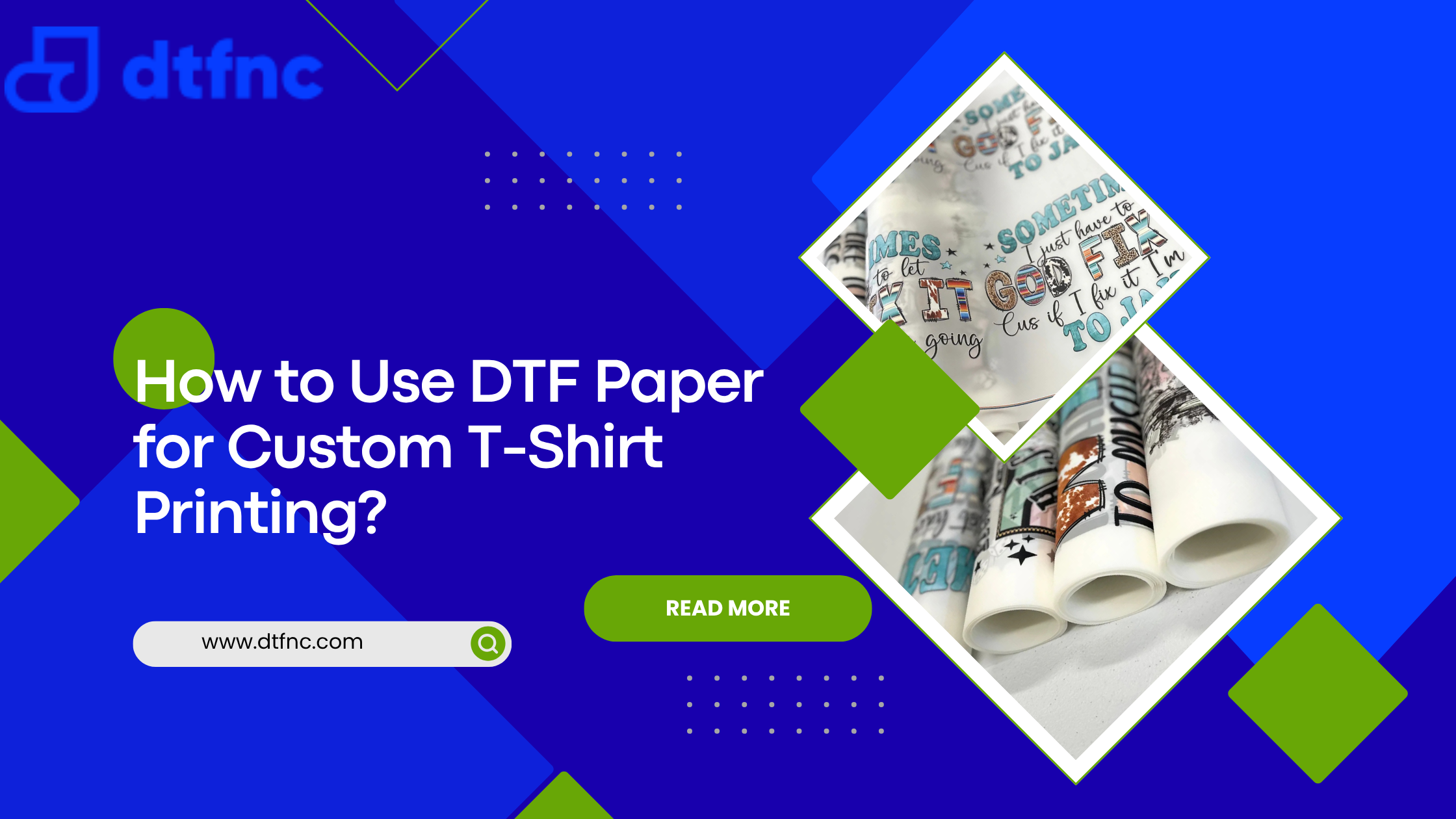Direct to Film (DTF) printing is revolutionizing the world of custom printed goods with its versatility and quality. Unlike traditional methods, DTF printing can be applied to a wide range of materials, opening new possibilities for personalized products. This blog will explore the various items that can benefit from DTF transfers, including socks, beanies, acrylic, tumblers, and more.
Understanding DTF Transfers
Before diving into what DTF can be applied to, let's briefly cover what DTF printing is. DTF transfer involves printing designs onto a special film, which is then transferred onto the desired item using a heat press. This method is gaining popularity due to its ability to produce vibrant, durable prints on various surfaces.
Here's how DTF Transfers works:
- Printing: The design is first printed onto a special PET film using a DTF printer.
- White Ink: An additional layer of white ink is often used as a base for vibrant colors, especially on dark-colored products.
- Powder Application: Once printed, the film is dusted with a special powder that adheres to the ink.
- Heating & Shaking: The film is then heated and shaken, causing the powder to melt and create a smooth, adhesive layer on the design.
- Transfer: The design is then transferred from the film onto the desired object using heat and pressure.
Also Read: What is Print On Demand?
What Can DTF Be Applied To?
-
Socks
One of the exciting applications of DTF printing is on socks. Custom socks have become a popular trend, whether for promotional items, sports teams, or fashion statements. DTF transfers adhere well to the fabric of socks, ensuring that the design remains intact even after multiple washes. The flexibility of the sock material is complemented by the durability of DTF prints, making them a perfect match.

-
Beanies
Beanies are another fantastic item that can be customized using DTF printing. The soft, stretchy material of beanies works well with DTF transfers, allowing for intricate and colorful designs. Whether you’re creating branded merchandise or unique fashion accessories, DTF on beanies offers a high-quality, professional finish that stands out.

-
Acrylic
Acrylic items, such as signs, keychains, and ornaments, can also benefit from DTF printing. Acrylic is a hard surface, and DTF transfers can adhere to it effectively, providing a vibrant and long-lasting print. This opens a range of creative possibilities for personalized gifts and promotional products.
-
Tumblers
Custom tumblers are a popular item, and DTF printing makes it easy to create unique designs that withstand daily use. The durable nature of DTF transfers means that the prints on tumblers will not fade or peel over time, even with regular washing. This makes them an excellent choice for personalized drinkware.

-
Other Fabrics
While socks and beanies are popular fabric items for DTF printing, this method can also be applied to other types of fabric, such as t-shirts, hoodies, and tote bags. The versatility of DTF transfers allow for high-quality prints on both natural and synthetic fabrics, expanding the possibilities for custom apparel and accessories.
Also Read: How to design a T-shirt?
Why Should You Choose DTF Printing?
DTF boasts several advantages that make it a compelling choice for customization projects:
- Versatility: As explored throughout this guide, DTF excels on a wide range of materials, offering endless creative possibilities.
- Durability: DTF prints are known for their impressive wash and wear resistance, ensuring long-lasting designs.
- Vibrant Colors: DTF inks produce rich and vibrant colors, bringing your artwork to life with stunning detail.
- Cost-Effectiveness: DTF offers a cost-effective solution for small and medium-batch printing compared to some traditional methods.
- Ease of Use: While there's a learning curve, the DTF process is relatively simple, making it accessible for beginners and professionals alike.
Key Considerations Before You DTF:
Before you start on your DTF customization journey, it's important to keep a few things in mind:
- Heat Resistance is Crucial: The material you choose needs to be able to withstand the heat of the press used to transfer the design. Exceeding heat limitations can damage the material, so always check its specifications.
- Surface Flatness Matters: DTF works best on flat or slightly curved surfaces. Deeply contoured or uneven surfaces might not produce optimal results.
- Material Compatibility is Key: Ensure the material you've chosen is compatible with the specific type of DTF ink being used. Different inks might have varying adhesion properties for different materials.
Conclusion
From socks and beanies to acrylic and tumblers, DTF printing offers endless possibilities for customizing a wide range of materials. Whether you're a business looking to create promotional merchandise or an individual wanting to add a personal touch to your belongings, DTF printing is a versatile and cost-effective solution. So why wait? Explore the world of DTF printing and unleash your creativity today!
FAQs About DTF Printing
Can you put DTF on any material?
While DTF printing is versatile, choosing materials that can withstand the heat press process is essential. Fabrics like cotton, polyester, and blends, along with hard surfaces like acrylic, wood, and metal, are ideal for DTF printing.
Can DTF be used on hard surfaces?
Yes, DTF printing can be used on hard surfaces like acrylic, wood, and metal. The key is to ensure that the surface is smooth and can withstand the heat and pressure of the transfer process.
Can you put DTF on plastic?
Yes, DTF printing can be applied to certain types of plastic, but testing the material beforehand is essential to ensure compatibility with the transfer process.
Can you put DTF on vinyl?
DTF printing is not typically recommended for vinyl surfaces, as the heat and pressure required for the transfer process can damage the vinyl. However, certain types of vinyl may be compatible with DTF printing, so it's always best to test before proceeding.









1 comment
Lorraine
Can you put DTF on waterproof garments and if so, do you have any tips on how best to do this